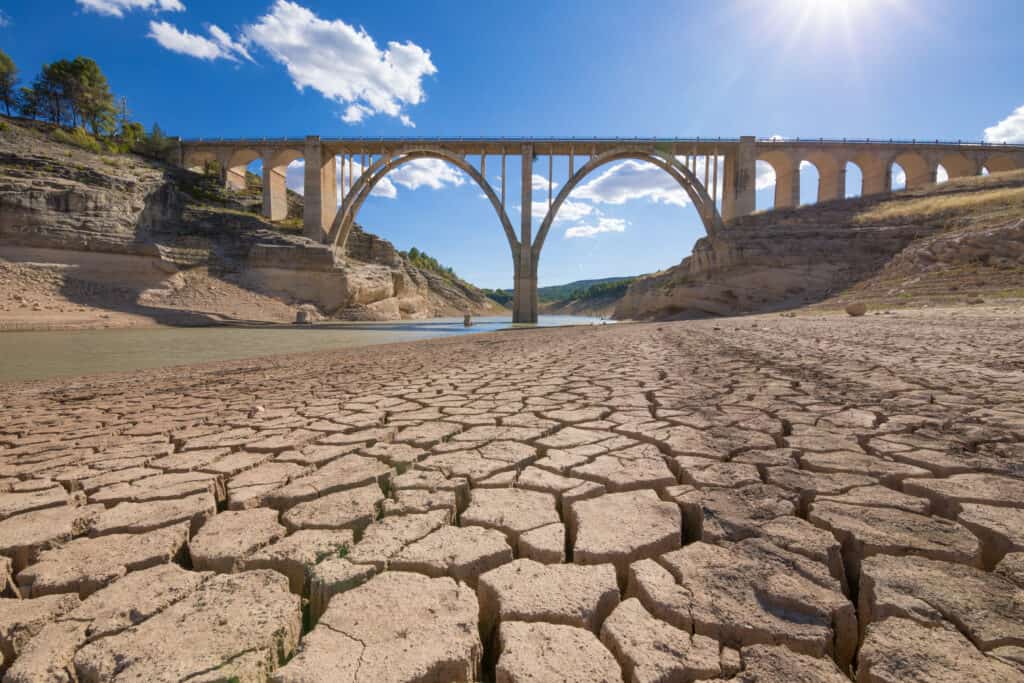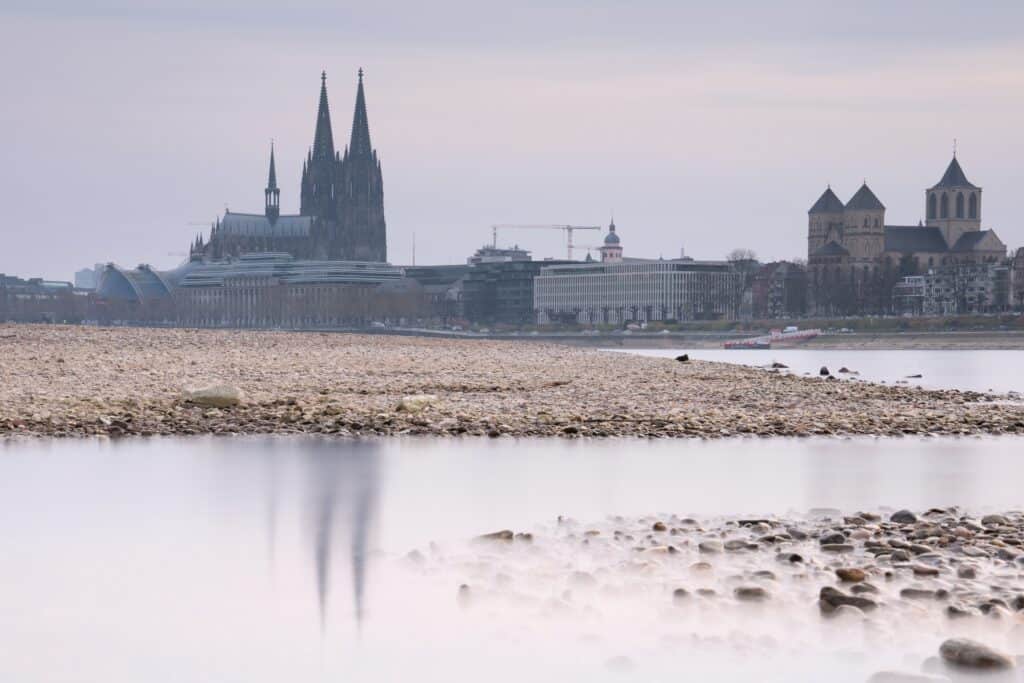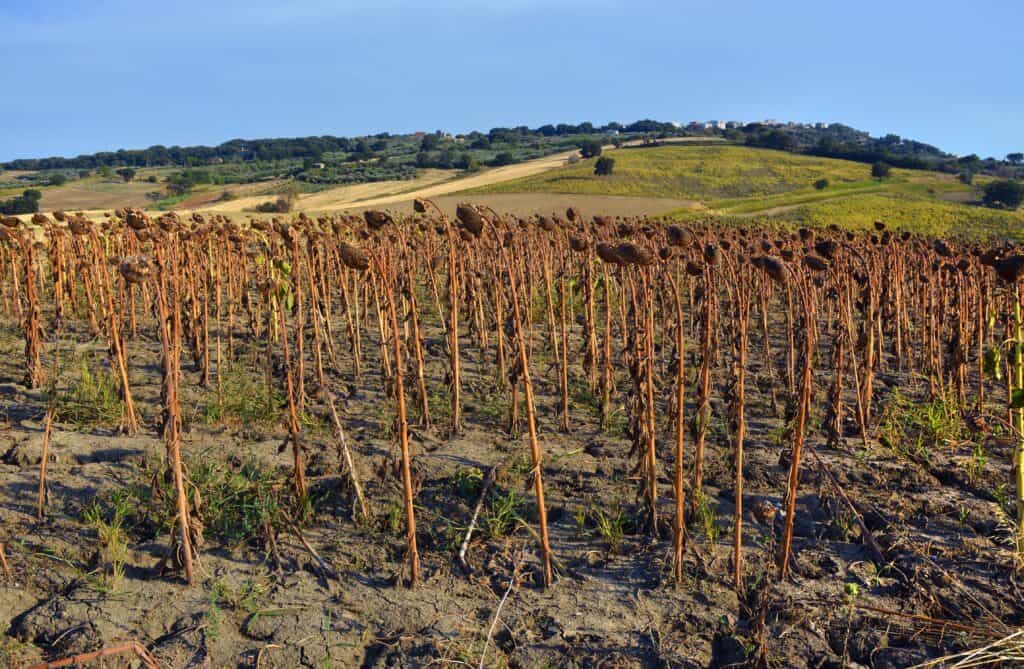All across Europe, extreme drought has caused a climate disaster this summer. Experts predict that this will be the worst drought the region has experienced in 500 years. However, it is still going on, so they are still evaluating the conditions, trends, and severity.
The Dire Effects of the Drought

Quintanilla/Shutterstock.com
The drought has caused entire lakes to dry up. Some of Europe’s major rivers are starting to run dry. Some rural communities that rely on well water now must have water trucked in because their wells are dry. Reservoirs are dangerously low.
The conditions are straining an already stressed economy and contributing further to supply chain issues. The drought is also causing an ecological disaster. Fish species in lakes and rivers are at risk. Dry river beds are littered with the carcasses of thousands of fish.
Wildfires are raging in France, Spain, and Portugal, fueled by high temperatures and low moisture levels.
There have been thousands of excess deaths across the continent, and many are attributed either directly or indirectly to the heatwave and drought.
Agricultural experts predict a large downturn in the production of certain crops like soybeans and corn. Hydroelectric power in Europe, which comes from the motion of water, has been reduced by 20% this summer. In the UK, many trees’ leaves have changed prematurely before autumn due to the lack of water.
Adding to this energy crisis is that some European countries use natural water sources to cool nuclear reactors. If there is no water, the power plants will have to shut down. Additionally, the release of the hot water into already hotter than usual rivers can harm the environment. In France, regulators have approved the release of warm water even though the current water temperatures do not allow for it according to the rules on the books. Energy prices are already up across the globe due to many countries reducing their reliance on Russia for fuel. Shutting down more power plants would mean even higher energy costs.
According to a report from the Global Drought Commission, the countries that face worsening drought conditions this summer include:
- Italy
- Spain
- Portugal
- France
- Germany
- The Netherlands
- Belgium
- Luxembourg
- Romania
- Hungary
- Serbia
- Ukraine
- Moldova
- Ireland
- The United Kingdom
The low water levels have been uncovering historic markers called “hunger stones.” In past historic droughts throughout Europe’s long history, people would engrave stones marking the river’s lowest levels. They are called hunger stones because years of extreme droughts result in fewer crops and less food. One hunger stone in Decin, in the Czech Republic, reads “If you see me, then weep.” Another in Bleckdale, Germany offers a slightly more hopeful message: “When this goes under, life will become more colorful again.”
At this point, nearly half of Europe is in a drought. Another 17% is on a drought watch, meaning drought conditions may be imminent.
What is Causing the Drought in Europe?

alfotokunst/Shutterstock.com
Western, Southern, and Central Europe hasn’t had any rain for about two months. And there isn’t any rain in the forecast in the near future. Some experts believe it may be another three months before the area sees any meaningful rainfall. However, one season of low precipitation doesn’t always create a drought. This drought was preceded by four seasons in a row with lower-than-average precipitation.
Experts believe this drought is caused by climate change. Higher temperatures mean plants use more moisture from the environment. Less snow in the winter due to the higher temperatures means less snowmelt runoff to add to summer water supplies.
Additionally, there is a reduced temperature difference between the different regions of Europe due to climate change. This makes the jet stream, an important air current that affects weather patterns, unstable. Instead of moving weather patterns along swiftly, this unstable jet stream causes them to stay in place for weeks. This is part of the reason for the extreme heat waves that have lasted weeks this summer. This jet stream instability can also cause polar vortexes in the winter that lead to colder than normal temperatures for weeks.
In some areas, climate change creates a loop that increases the temperature even further. For example, when glaciers melt in mountains, more rock is exposed. Glaciers reflect sunlight, keeping temperatures cooler. The rock absorbs sunlight, increasing temperatures further, and melting glaciers faster.
What Is the Outlook for Europe?

Luigi Bertello/Shutterstock.com
As mentioned, experts believe that drought conditions may continue for several more months in Europe. In mid-August, some areas of Europe did receive some much-needed rain. But when the ground is so parched, the water first gets absorbed by the soil and very little water makes it into dry rivers, reservoirs, and lakes. Predictive maps show that the drier than normal conditions will likely continue into October, especially in Spain and Portugal. However, Scandinavian countries will see higher than average rainfall.
Regardless, the UN predicts that in Europe and worldwide, people will need to get used to drought conditions, and other more extreme weather conditions as climate change continues to progress.
Up Next:
- What Happens if California Has Another Drought?
- The Worst Droughts in Human History and What Happened After
- The Most Devastating Natural Disasters on Earth and the Damage They Caused
- 19 Countries with No Rivers (One is 3X Bigger than Texas!)
The post Disaster Watch: Explaining Europe’s Drought Crisis appeared first on AZ Animals.
from Animal News, Facts, Rankings, and More! - AZ Animals https://ift.tt/nB5IXlm